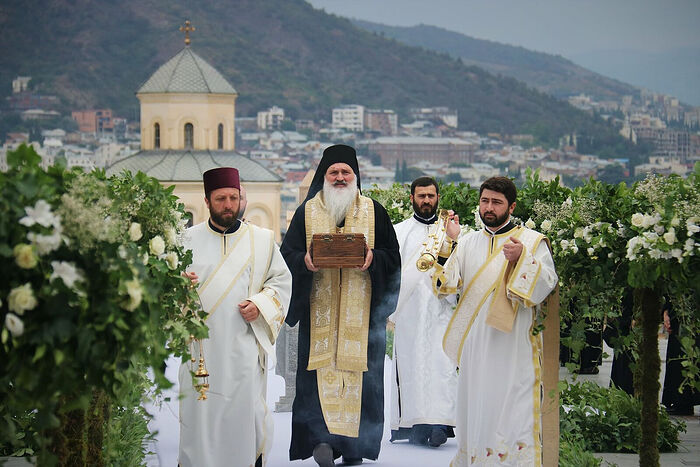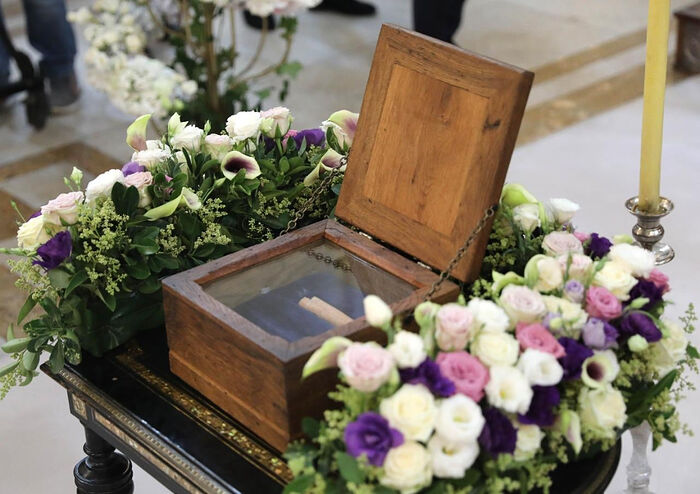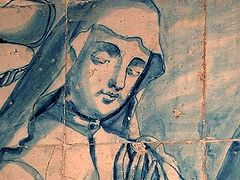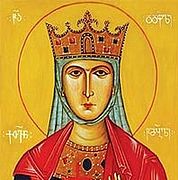Tbilisi, July 13, 2021
The Georgian Orthodox faithful rejoiced to receive a part of the relics of the holy Great Martyr Queen Ketevan that were gifted to the Georgian Orthodox Church over the weekend.
The relics were loaned to the Georgian Church for several months in 2017-2018 for the veneration of the faithful, and now, by an extraordinary decision of the Prime Minister of India, they will remain permanently in St. Ketevan’s homeland.
Existing regulations in India don’t allow for the transfer of items discovered in archaeological excavations, as they are considered part of India’s cultural heritage, the press service of the Georgian Church emphasizes, but due to the centuries-old friendly relations between Georgia and India, and at the request of Pat. Ilia, active negotiations were held with the government of India, with the involvement of the Georgian Ministry of Foreign Affairs, culminating in the Indian PM’s order.
The relics were officially handed over to the Church at Holy Trinity Cathedral in Tbilisi on Saturday, with the participation of Pat. Ilia and other hierarchs of the Georgian Church, the President and Prime Minister of Georgia, and the Prime Minister and Minister of Foreign Affairs of India, and other officials.
The greeting and blessing of the Patriarch were conveyed by His Eminence Metropolitan Shio of Senaki and Chkhorotsqu, emphasizing that the time of St. Ketevan’s rule in the 17th century was the most difficult time in Georgian history, when the enemy “wanted complete destruction of the nation.”
But “the Church kept the people strong and empowered them to face adversity fearlessly,” Met. Shio said, conveying the words of the Georgian primate.
“Today we are witnessing a great and historic day… From now on, St. Ketavan will strengthen the traditional-cultural closeness between our countries,” he continued.
“May the prayers of St. Ketevan cover all of Georgia!” he concluded.
In his speech, Georgian Prime Minister Irakli Gharibashvili emphasized the importance of St. Ketevan for the Georgian nation: “The torture of Queen Ketevan was followed by the awakening of our country and the unprecedented rise of the national consciousness. Her heroic life of devotion to faith and homeland is exemplary even today and will always remain so.”
Next, Subrahmanyam Jaishankar, the Indian Minister of Foreign Affairs spoke, emphasizing the blessing of his visit to Georgia: “I consider myself blessed that my first visit to Georgia turned out to be such a blessing. The sacred relics rested in Goa, in the monastery of St. Augustine after the 17th century. Given the great spiritual value that the sacred relics possess for the people of Georgia, we have preserved this sacred heritage as our own.”
***
Queen Ketevan was married to the heir of the throne of Kekheti, but was left a widow at his untimely death. The king had two other sons, George and Constantine, the latter of which was raised in the court of the Persian Shah and converted to Islam. At the Shah’s request the apostate from Orthodoxy murdered the king, his father, and his brother, the heir. Because of his crime and insolent demand to take Ketevan as his wife, the nobles executed him.
Georgia was subject to Persia at that time in history, and therefore Ketevan needed the Shah’s permission to place her son on the throne. This was granted but eventually Queen Ketevan, along with her two grandsons, were taken hostage deep into Persia, and Georgia was brutally harrowed by the Persians. Ketevan spent ten years in captivity, which she spent in pious asceticism, but finally the Shah announced his intention to marry her after her conversion to Islam. She refused, and was publicly subjected to inhuman tortures, finally giving her soul to the Lord in 1624.
A group of French Augustinian missionary fathers, who had witnessed the inhuman tortures, wrapped Queen Ketevan’s body in linens scented with myrrh and incense and buried it in a Catholic monastery in Isfahan.
Some time later the holy relics of Great-martyr Ketevan were delivered to her son, Teimuraz, King of Kakheti.
Teimuraz wept bitterly for his mother and sons and buried the relics with great honor in the Alaverdi Cathedral of St. George, where they remained until 1723 when they disappeared without a trace. Particles of her relics were also taken by the Augustinian monks to a Catholic monastery in Goa (a former Portuguese colony in India), as well as the Vatican and Belgium.
The Goa monastery was destroyed in the 19th century. Various scientific expeditions have sought since then to find the relics of Queen Ketevan in India.
In 2013, Archeology magazine spread information that remains discovered in the church ruins of Goa belonged to Queen Ketevan. According to the article, DNA analysis from the arm bone discovered in a stone sarcophagus showed that the bone was most probably not from India and is of Georgian origin.
After long negotiations, the Indian authorities have now agreed to give the relics to Georgia.
Follow us on Facebook, Twitter, Vkontakte, Telegram, WhatsApp, MeWe, and Gab!






